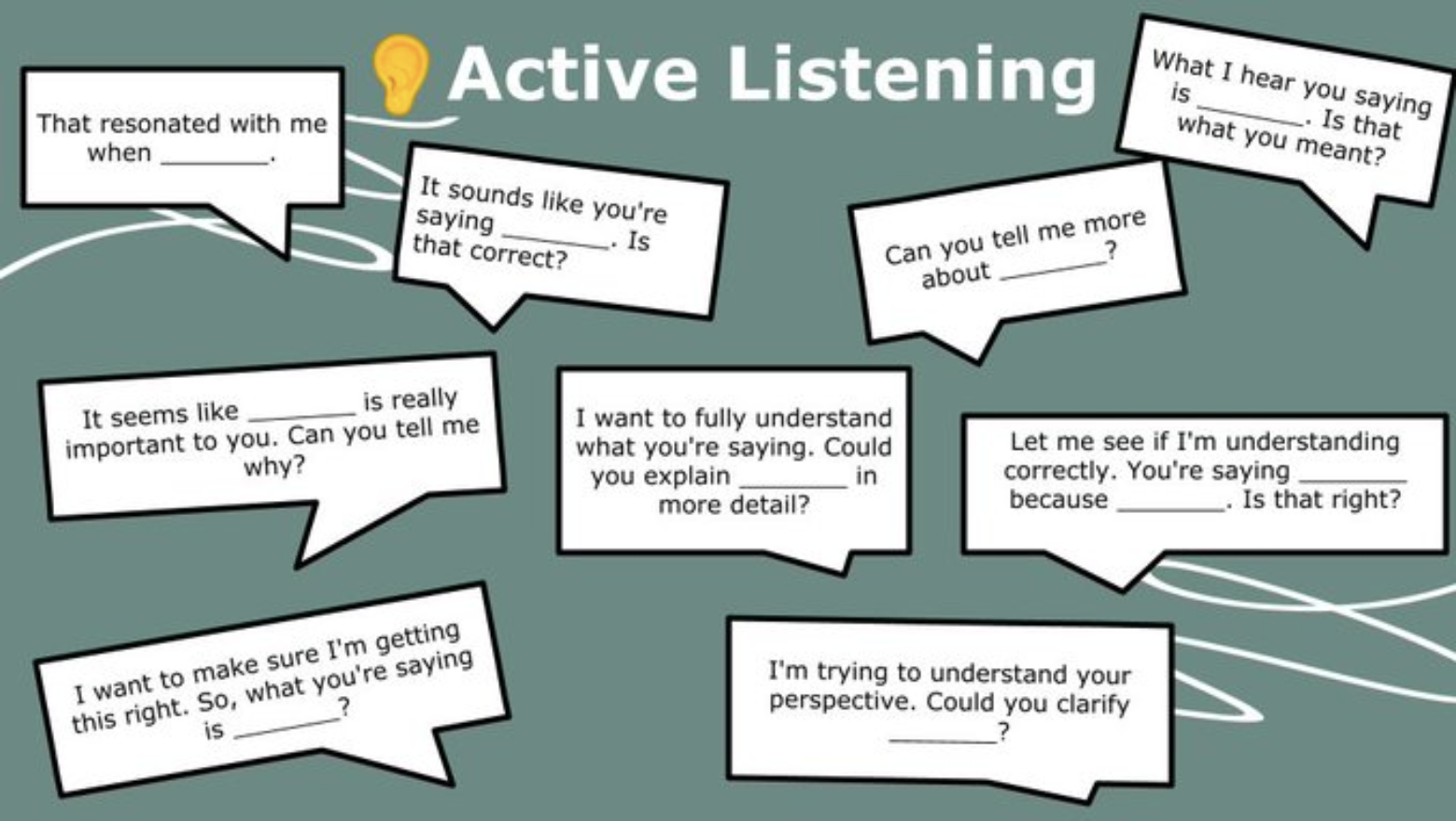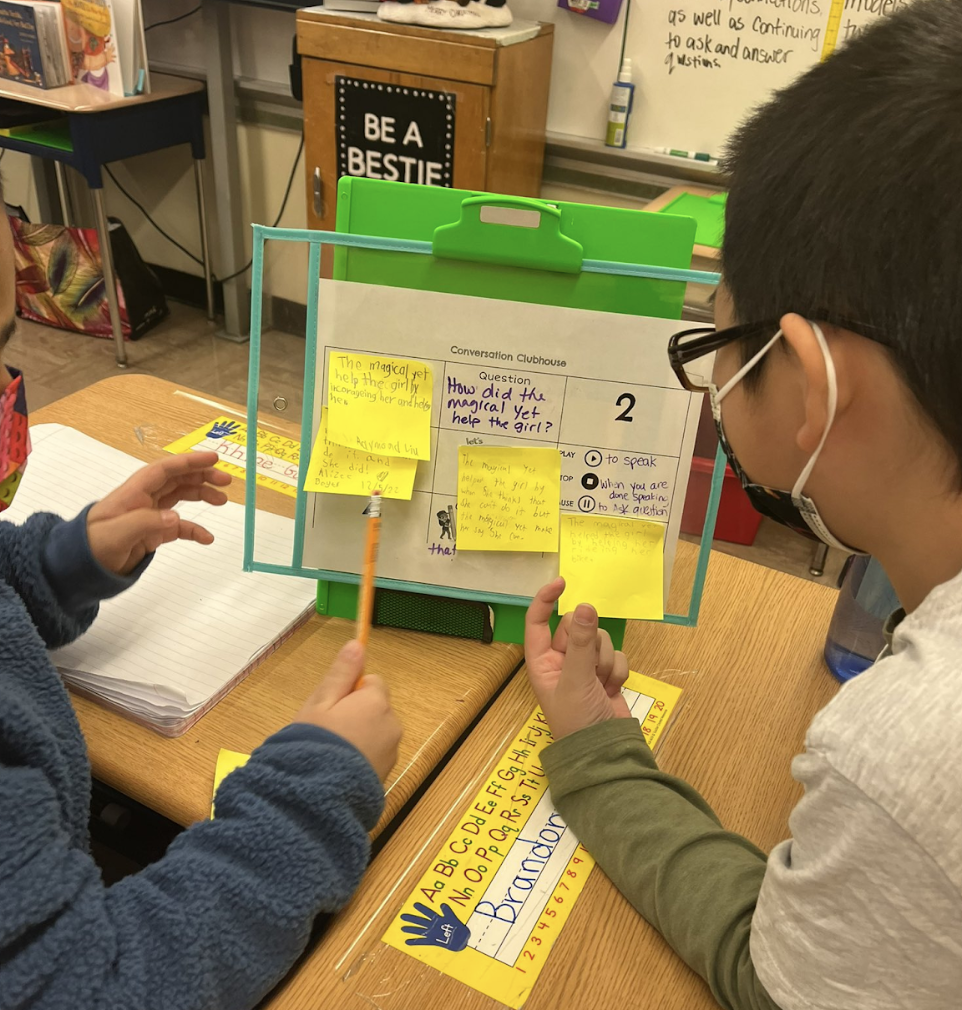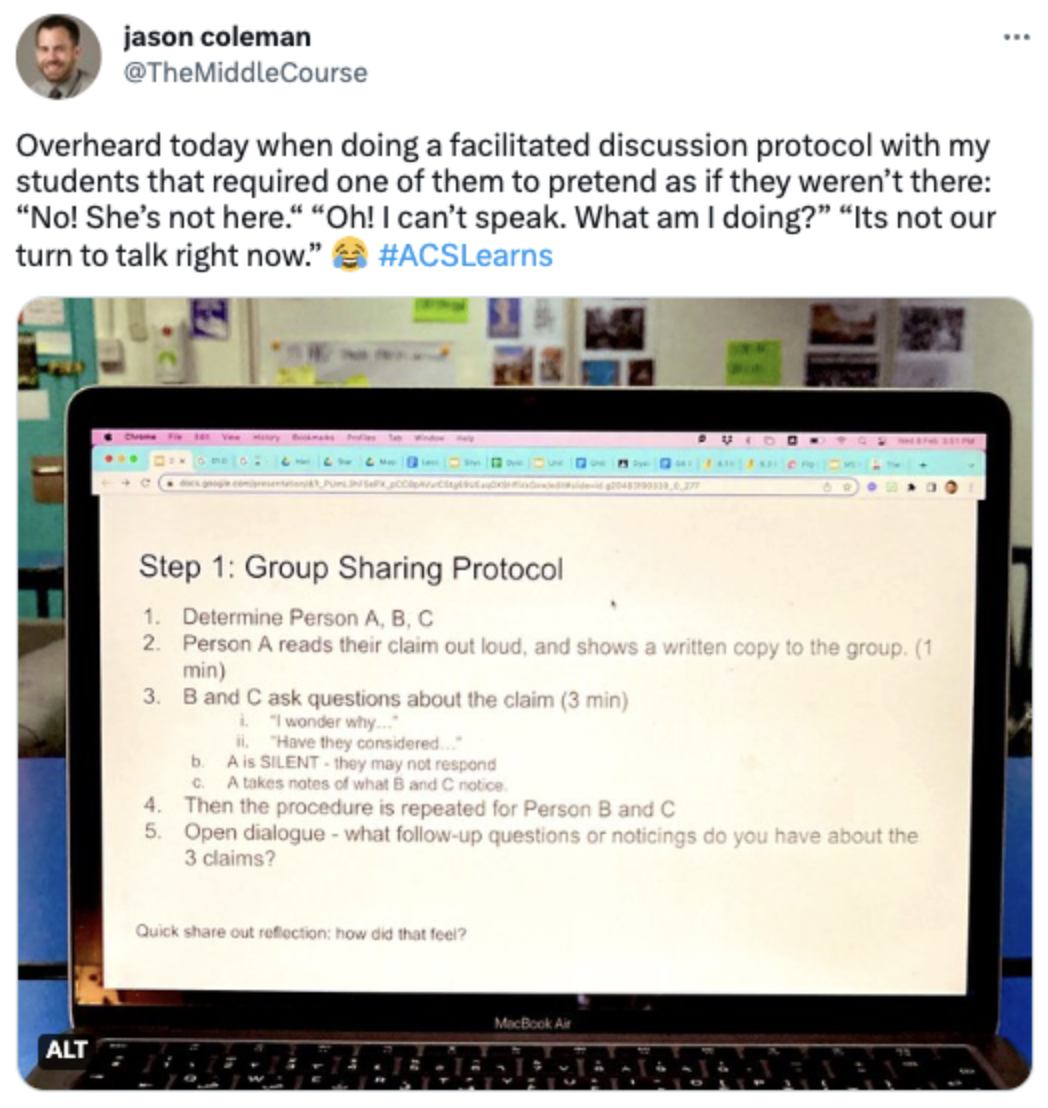Lead Guided Discussions
Guided discussions are group conversations that use a structured protocol and usually a variety of sentence stems to support learners with the conversation. These build collaboration skills that can be used in larger group projects.
Bright Spots
Gain inspiration from authentic examples of this strategy shared by teachers who have used them with their learners.
Creating your own Bright Spots? Let’s get them out into the world! Share yours here.





